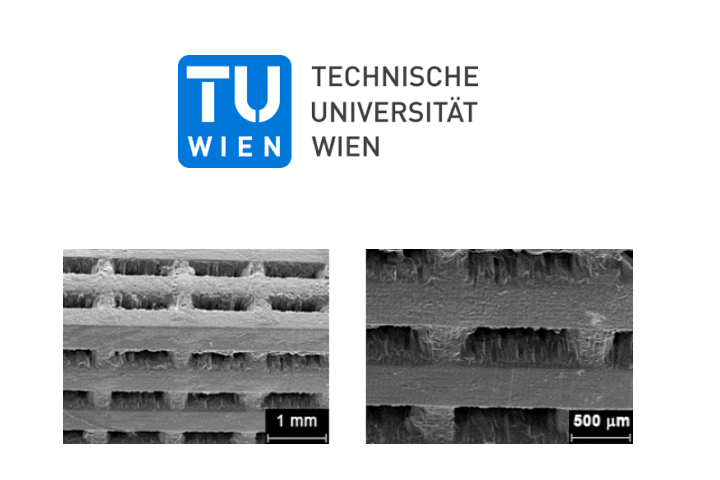Many coatings, including tooth fillings, printing inks, and varnishes, are cured with light, but capabilities have been lacking to produce homogenous, tailored, polymer networks. Even if you manage it, the materials can be brittle, which limits the ability to use photopolymers for applications such as 3D printing, microelectronics, and biomedical. But a team of researchers, led by TU Wien’s Professor Robert Liska, recently published a paper in the journal Angewandte Chemie, titled “Vinyl Sulfonate Esters: Efficient Chain Transfer Agents for the 3D Printing of Tough Photopolymers without Retardation,” that explains their new method for 3D printing tailored, tough photopolymers.
The abstract reads, “The formation of networks through light‐initiated radical polymerization allows little freedom for tailored network design. The resulting inhomogeneous network architectures and brittle material behavior of such glassy‐type networks limit the commercial application of photopolymers in 3D printing, biomedicine, and microelectronics. An ester-activated vinyl sulfonate ester (EVS) is presented for the rapid formation of tailored methacrylate‐based networks. The chain transfer step induced by EVS reduces the kinetic chain length of the photopolymer, thus shifting the gel point to higher conversion, which results in reduced shrinkage stress and higher overall conversion. The resulting, more homogeneous network is responsible for the high toughness of the material. The unique property of EVS to promote nearly retardation‐free polymerization can be attributed to the fact that after the transfer step no polymerizable double bond is formed, as is usually seen in classical chain transfer agents. Laser flash photolysis, theoretical calculations, and photoreactor studies were used to elucidate the fast chain transfer reaction and exceptional regulating ability of EVS. Final photopolymer networks exhibit improved mechanical performance making EVS an outstanding candidate for the 3D printing of tough photopolymers.”
The method of light-curing is most often a radical chain polymerization, where light energy splits an initiator into radicals that attack the monomer. Then, a new radical is formed which then becomes the basis for a polymer network that continues to grow by attacking and binding to additional monomers.
It’s necessary for faster production times and high spatial resolution to have a short irradiation phase, which is why newer methods meant to control a product’s material properties and radical photopolymerization slow down curing – not great for 3D printing.
The TU Wien team’s approach to tailored production of methacrylate-based photopolymers – without inhibiting curing – uses an ester-activated vinyl sulfonate ester (EVS) as a chain transfer agent, because it can easily split off a portion of itself to activate the process.
If a growing polymer network doesn’t attack another monomer, but instead attacks EVS, an intermediate will form, then quickly split to make a highly reactive radical (tosyl radical) and a terminated polymer chain, which will in turn start a new chain reaction. The more EVS that you add, the shorter the average length of chain the polymer network will have. This is good news – shorter polymer chains can stay mobile longer, which lowers the danger of shrinkage cracks during the curing process.
The polymerization is not inhibited in this new process, which is a direct contrast to conventional chain transfer agents, as there aren’t any reversible reaction steps to take or stable intermediates involved; as Wiley puts it, the “splitting off of the tosyl radical is favored.”
For testing purposes, the team set up a scaffold-like sample structure using a methacrylate copolymer. Individual layers, with a 50 µm thickness, were spatially well resolved in the structure – the material is solid, but also elastic, homogenous, with high tensile strength and impact resistance. All of these properties are easily adjustable simply by changing how much EVS is added to the mix; a lack of EVS makes the material to be brittle to be 3D printed.
Co-authors of the paper include Dr. Konstanze Seidler, Dr. Markus Griesser with the University of Ottawa, Markus Kury, Dr. Reghunathan Harikrishna, Dr. Peter Dorfinger, Dr. Thomas Koch, Anastasiya Svirkova, Professor Martina Marchetti-Deschmann, Professor Juergen Stampfl, Professor Norbert Moszner from the Lichtenstein location of dental company Ivoclar Vivadent AG, Dr. Christian Gorsche, and Professor Liska.
Discuss this and other 3D printing topics at 3DPrintBoard.com or share your thoughts in the comments below.
[Images: Liska et al]
